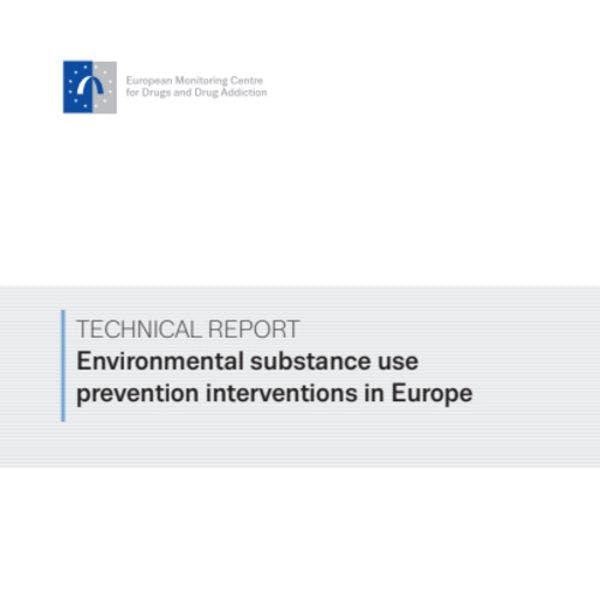Interventions de prévention environnementale de l’usage de substances en Europe
L’OEDT offre un inventaire indicatif et une catégorisation des mesures de prévention environnementale en Europe. Pour en savoir plus, en Anglais, veuillez lire les informations ci-dessous.
There is growing recognition of the importance of environmental factors in health behaviour. Environmental prevention complements the more established approaches of providing information/warnings and skill/competence development.
Traditional substance use prevention approaches in Europe have predominantly focused on warning and informing people of the risks and consequences of drug use and/or informing them of safer ways to use substances. More recently, developmental approaches aimed at helping young people to develop the necessary social skills and competences to avoid substance use have been used alongside informational approaches.
These types of interventions focus on the individual as the main driver of behavioural change. The role of executive functions and how they develop during childhood and are influenced by upbringing is often neglected. It has been claimed that an over-reliance on approaches that fail to consider executive functions contributes to the persistence of health inequalities. Many behaviours we perform every day are automatic and are generally reactions to common and familiar stimuli, demonstrating the importance of environmental and social cues, and of automatic processes in influencing behaviour. This may explain the limited success of prevention approaches that focus solely on individual responsibility for decision-making and self-control.
The purpose of environmental prevention policies and interventions is to limit exposure to unhealthy or risky behaviour opportunities (or to promote the availability of healthy opportunities). This approach differs from traditional behavioural prevention approaches as it targets the automatic system of behaviour (one that does not require deliberate cognition). Thus, it requires lower individual ‘agency’; individual personal resources, such as conscious decision-making, motivation and intent, are less important in these types of intervention.
Nevertheless, there are barriers to the implementation of environmental prevention measures, including the lack of knowledge of their theoretical underpinnings; criticism of them as expert defined; and the perception that they are complex and difficult to implement.
Environmental prevention covers a wide range of measures and it is therefore useful to classify these interventions, both to understand the underlying logic of the different types of interventions and to guide mapping of intervention availability. The operational definition proposed in this publication categorises environmental prevention measures into three categories: regulatory, physical and economic.
A survey of prevention experts in Europe was undertaken to provide an overview of the availability of environmental prevention interventions in the region and the extent of implementation of measures (enforcement of regulatory and economic measures or existence/provision of physical measures).
To gather this information, an electronic questionnaire was distributed to the emailing lists of five European organisations whose members have expertise in one or more of the domains related to substance use. Participants opted in to the survey and suggested other potential participants. The questionnaire link was also circulated through social media.
Téléchargements
Régions
Profils associés
- European Monitoring Centre on Drugs and Drug Addiction (EMCDDA)
